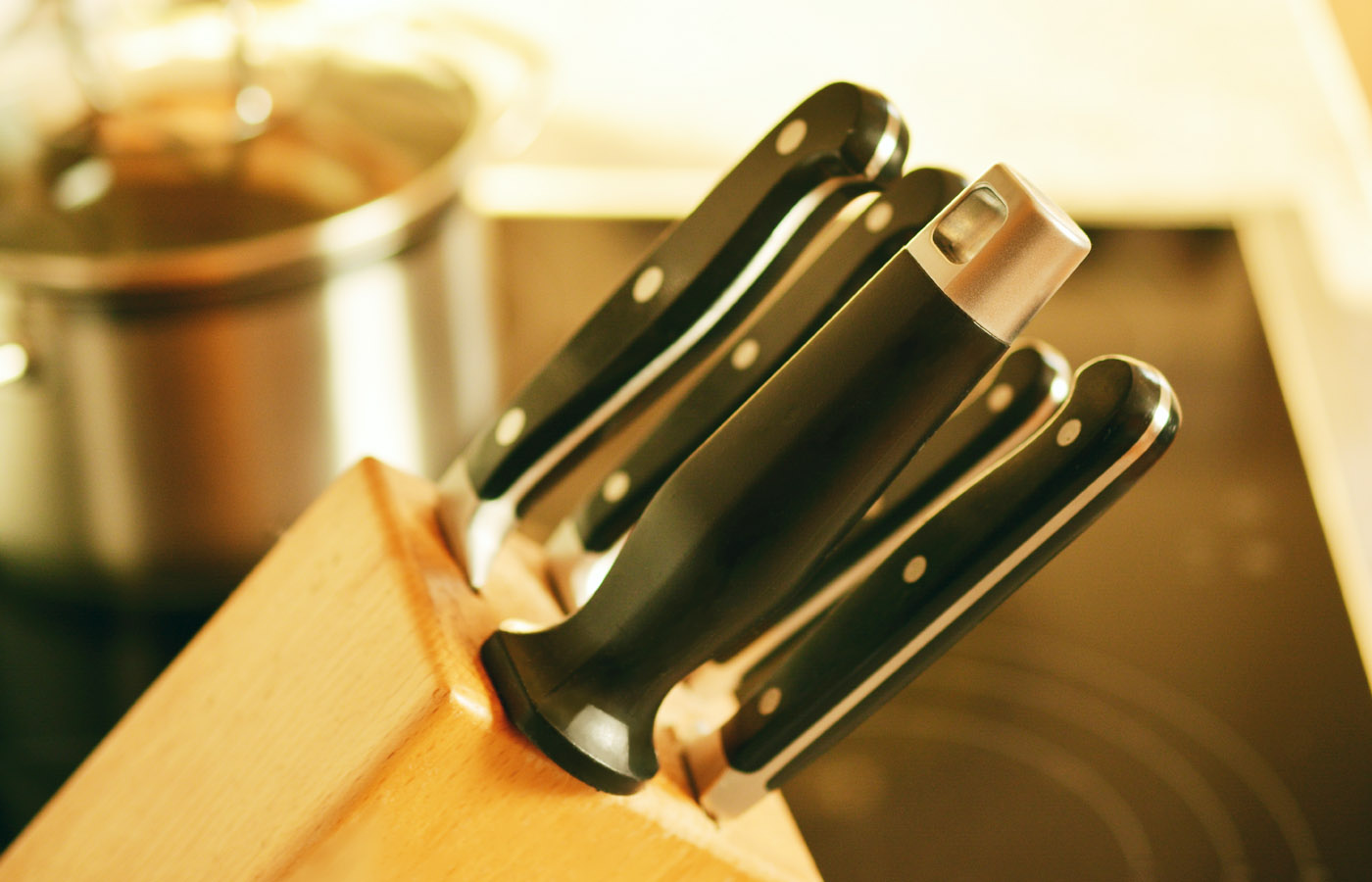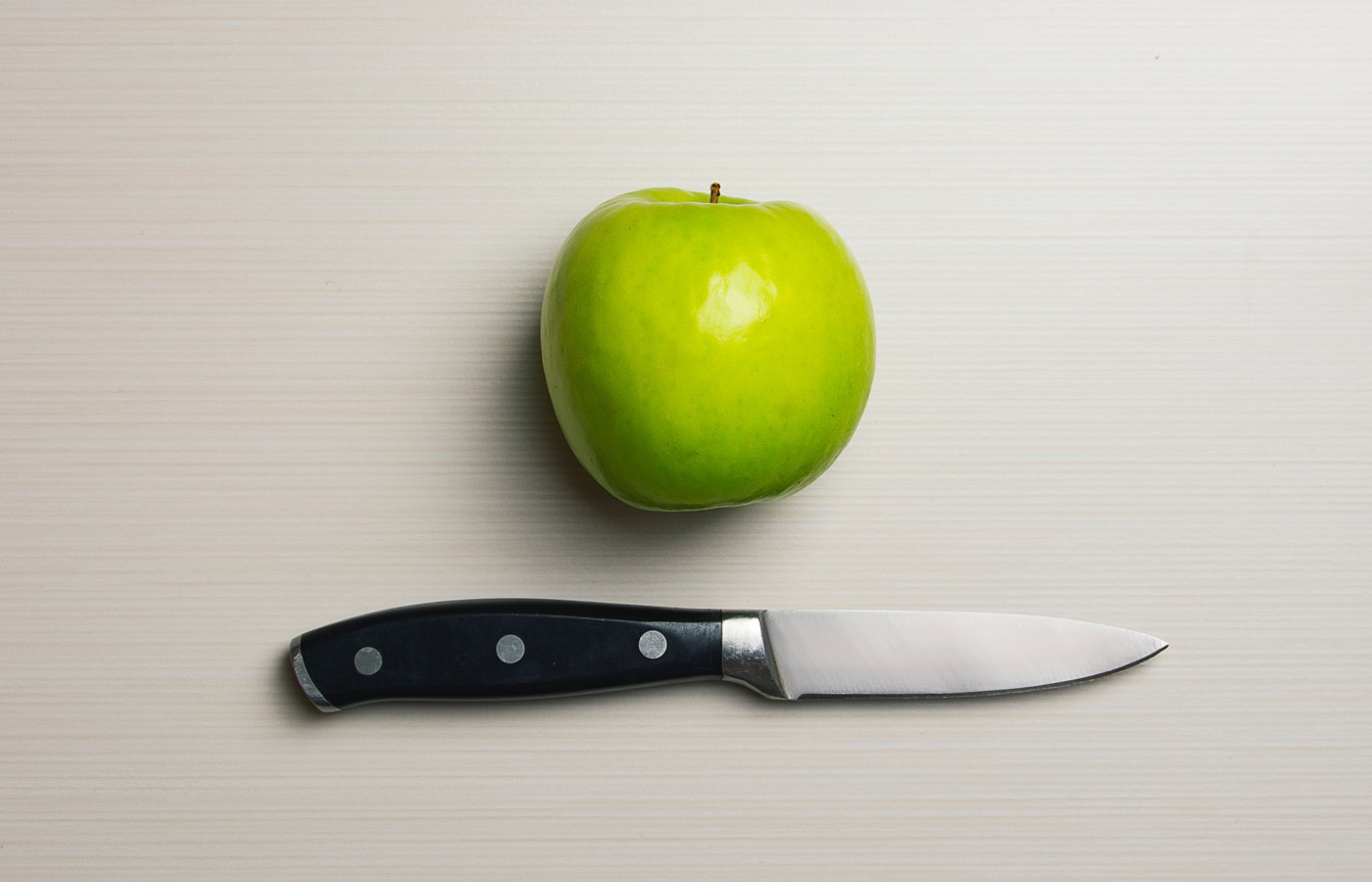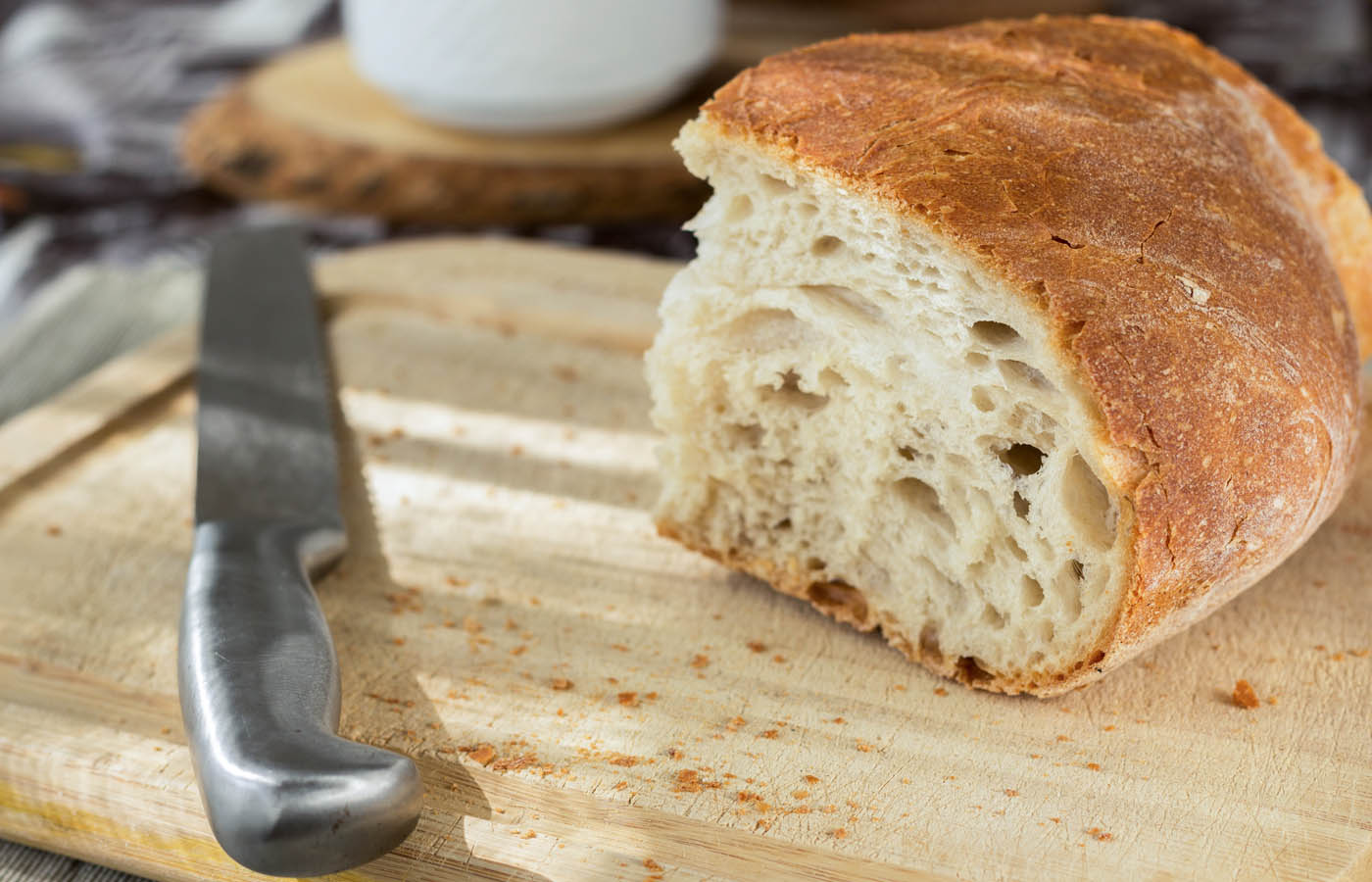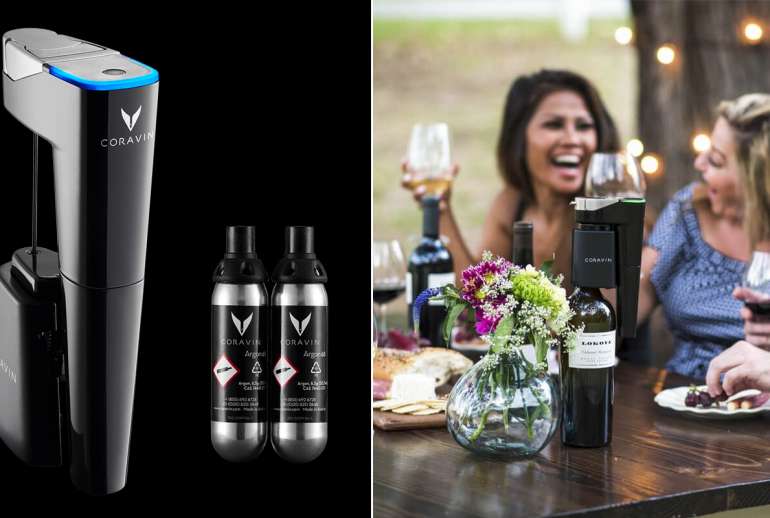Imagine it that you’re in the kitchen trying to prepare a good meal. It’s the first time you have your new date over and you want everything to look and taste right. You put your knife to the tomato on the cutting board, but as you press down, the fruit squashes under the pressure of a dull blade and squishes out everywhere. Do you A) throw down the knife and scream from frustration, B) throw out the tomato to try it again, or C) nod with realization that you’re wielding a terrible knife and that’s it’s time to get more serious in the kitchen with better equipment? Answer: C
In my opinion, one of life’s essential investments is a great set of kitchen knives. If you like to cook, they’ll help you achieve the most out of life. And, once you start working with them you’ll quickly wonder why you lived for so long without the upgrade – time to stop being a masochist.
But you’re probably thinking, how do I go about finding a good knife? We’ll start with the basics to clarify the knife as an essential tool and what makes a good one versus a bad one. Oh and you may as well get it in your head now that really good knives often come with a relatively pricey expense. But the upside is that, if chosen properly, a high quality knife should last you a lifetime, with all the proper maintenance and care of course.
Now, whether you buy one knife or a set is totally up to you and your budget. Keep in mind the possibility to add to a collection over time – which should help ease the financial burden of cutting edge technology. The truth remains, however, that you don’t necessarily need an entire set of knives, but having three to five essential pieces will suffice and bring wonderment to the world of your kitchen.
Three essential knives that you should own
Start your kitchen knife acquisition process through an understanding of your kitchen habits. Ask yourself, “What do I cook and how often?” If you’re not a fisherman and constantly filleting your own catch of the day, then, do you really need that fancy fillet knife? What’s the point in owning one if it’s just going to collect dust rather than be put to use.
One of your first purchases should be a paring knife. Paring knives are fantastic little knives for working with smaller pieces of food, fruits and vegetables. They allow for detailed work like peeling and trimming.
The next piece that’s a must to have is a general duty, multi-purpose knife that’s good for the kitchen gamut of chopping, dicing and slicing activity.
To round out a basic knife trifecta it is a good idea to purchase a serrated blade. It will be time to jump for joy when you can shave a slice of tomato with perfection and ease. Serrated knifes aren’t just useful for salad inputs and main courses either – they’re necessary for slicing freshly baked goods, like breads and cakes. If you eat fruit for deserts too, a serrated knife is the thing to use.
What makes a knife good?
When assessing the overall quality of a good knife, it’s necessary to understand all of the components. You wouldn’t buy a car before test driving it would you? The same goes for knives. It’s best not to buy before getting a feel for how it handles. Does it fit into the palm of your hand nicely? Does it offer good dexterity and balance.
A trademark of a good knife is that its weight is evenly distributed throughout the body: all the way from the handle’s end to the tip of the blade. You might not run, but just as a running shoe needs to transition smoothly from heel to toe, your cutting action should be round nicely from wrist to cut through. Don’t discount the ergonomics of a knife – there’s no reason to end up pain like carpal tunnel, tendonitis or suffer from repetitive stress, which are actually common injuries among chefs!
Understanding blade basics
Blades are made from a variety of materials, each of which has pros and cons. The first three blades we discuss are made from metal while the last blade mentioned is ceramic.
The benefit of carbon steel blades is that it can maintain a sharp edge for a long period of time. They happen to be easy to sharpen, but the caveat of a carbon steel blade is that they’re fast to rust. On the other hand, stainless steel blades do a better job at resisting corrosion, but with use, the blades can wear out quickly and are not that easy to sharpen. There are stainless steel alloy blades which combine high quality carbon and with stainless steel – the drawback to these types of blade being high price tags.
Ceramic blades are another type of blade that offer a great experience. The ceramic knives are incredibly sharp and simply wonderful to use . They don’t require as much maintenance as a traditional metal blades. Keep in mind though that the ceramic blade is quite delicate and can easily chip or break when dropped. I am truly in love with my ceramic knives, but don’t ever try to cut into something hard: I learned my lesson the hard way while trying to cut through a chicken bone – it caused a massively ugly and large chip out of the middle of the beautiful ceramic blade.
Another general thing about a blade is that the cutting edge should run the full length of the knife to give you a full range of cutting motion.
The construction of a knife
You’re going to want to know how well a knife is manufactured. Does it look solid or does it look more like a stick and blade and some twine wrapped around to hold it together. I’m only half joking here. You should aim to find a one-piece construction. This style of knife will have the most integrity and durability: fewer parts mean less potential for breaking or bending – you want to watch out for any unnecessary stress.
The most critical part of the knife to check is called the hilt. It’s where blade and handle come together. It’s imperative that this area is well put together as the handle bears the brunt of cutting force. You also want to make sure there are no spaces around the handle – having food stuck inside isn’t particularly hygienic.
Maintaining your knives

Regardless of what you buy and for how long the manufacture promises it will stay sharp, at some point all blades become dull and you will need to sharpen it. If you’re a pull yourself by your boot-straps kinda person, then you may as well learn how to sharpen the knives and invest in that equipment too. Otherwise, find a place such as a grocery store or outdoor sporting store that offers knife sharpening services.
It is also best wash your precious knives by hand and keep them stored in some kind of a handsome block. Other options include magnetic mounted strips – but I’ll leave the interior decorating up to you. Chop on!






